Exposicion Cartas de Cólon in Palácio de Liria - Madrid
[EN]
Hello everyone, I hope you are well. Today I will continue my previous post. The "Letters from Colon" exhibition was in a specific area of the palace as you could see in the previous post. The other rooms had different exhibitions. Each one was interesting and showed something new. The palace, with its beautiful architecture, helped to give even more life to the exhibitions. The "Letters from Colon" exhibition was the one that caught my attention the most, but the others are also no longer good.
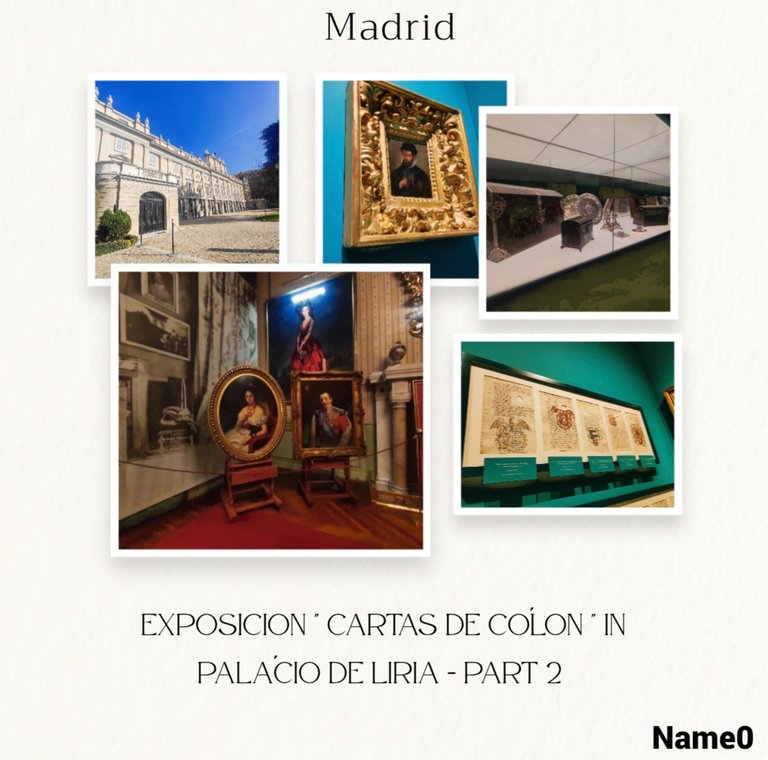
There were tourist guides there and I listened and learned a little, not asking for a guide, whenever a question arose I waited for a guide to stop by because there were always visitors. Honestly, I don't like visiting with guides because it would take much longer and we want to visit several things a day and with a guide we are there much longer, of course there are things that I am very curious about and want to know 😅 The visit continued, and I found a room full of historical objects, such as old paints and writing quills. Some of the tourists talked to the guide about the importance of these objects, and I heard some details about how they were used at the time. The guide also spoke about the art of writing by hand, a practice that, according to him, described a unique dedication, and I felt captivated by the idea of how each letter was a true reflection of the person who wrote it, with all their care and interest.
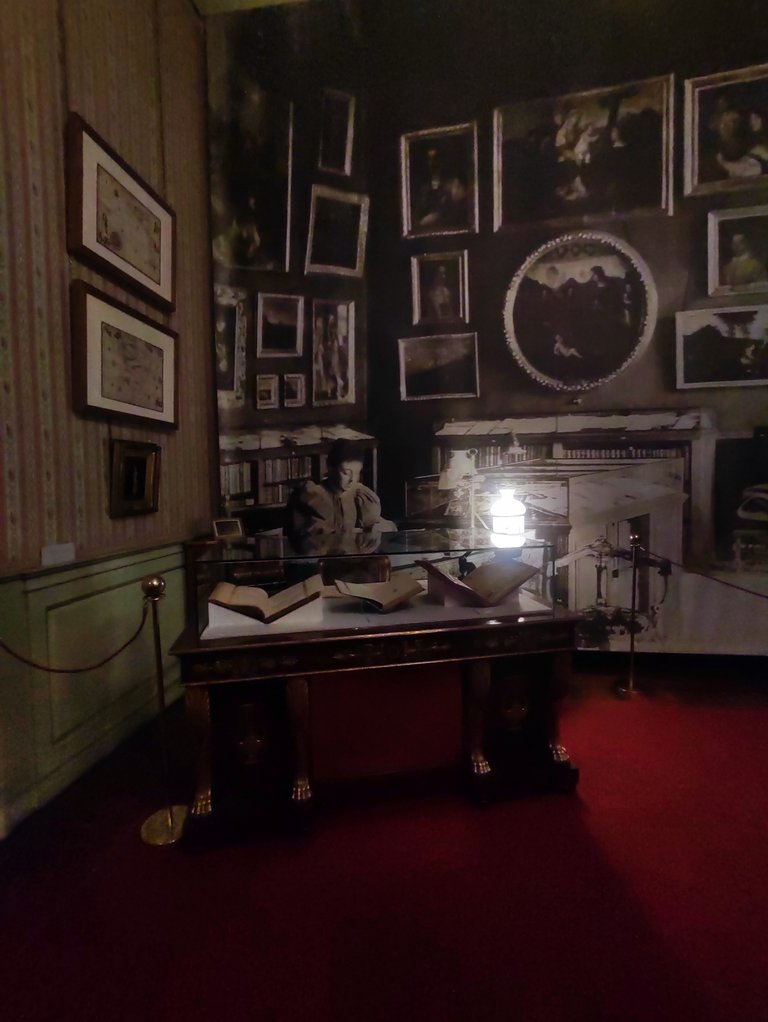
I passed by a room where several pieces of colonial art were on display. The guide was explaining the relationship between the artists of the time and the discovered lands. I heard him talk about how art was used, not to express beauty, but also to document and legitimize Spanish presentation in the Americas. I kept thinking about how the power of art and communication has always been a tool in the hands of those who control the narratives. The fact that I was able to observe those things made me feel even more connected to that story.
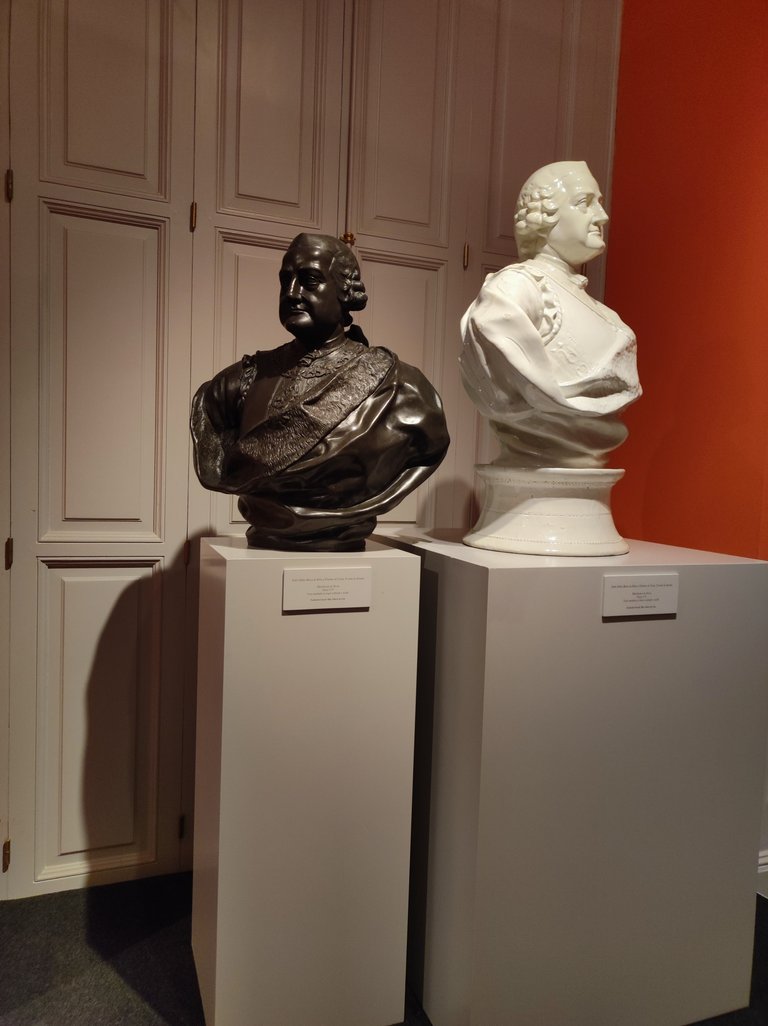
As I explored the Liria Palace further, I came across a room that made me stop for a moment. It was full of old portraits of important people from colonial times. The faces painted on the canvases are realistic, with penetrating gazes that make me imagine stories behind each figure. I saw the guide talking to other tourists about how these portraits were not only a form of art, but also a way of keeping the memory of these people alive, as if, through painting, the past was immortalized.
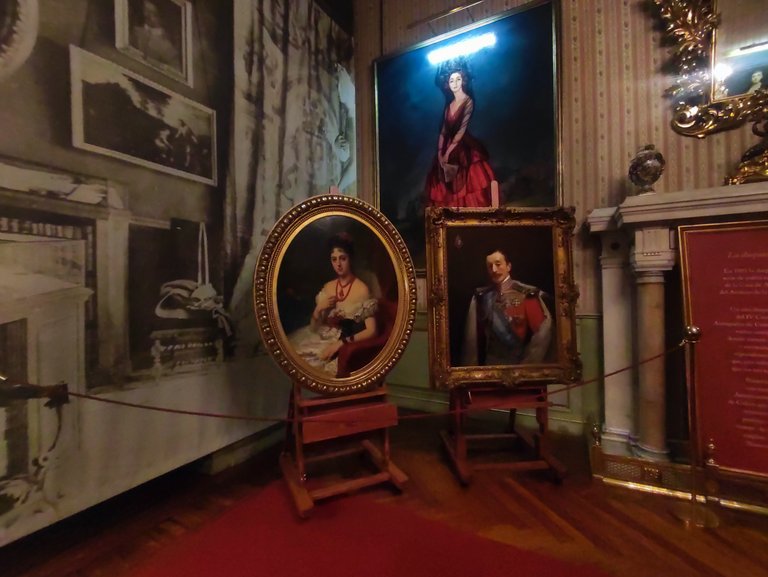
As I walked through other rooms, I realized that the palace was full of pieces of antique furniture, many of them of great historical value. The chairs and tables, although seemingly simple, were made of rare wood and intricately carved. The guide explained that most of this furniture dated from the 17th and 18th centuries and was associated with aristocratic families of the time. Although I appreciated the objects, I also felt that I was trying to understand the daily lives of these people through what was left of them.
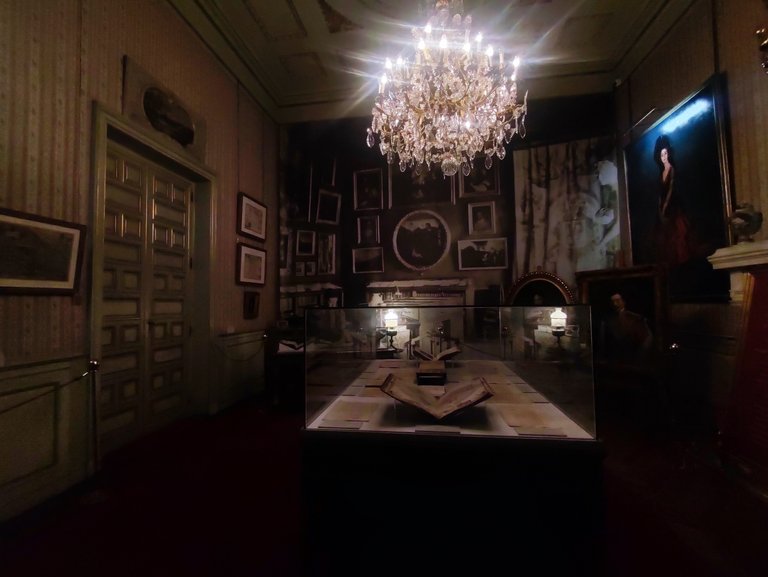
As I neared the end of the visit, I realized that the Liria Palace was not only a place to showcase art and history, but also a space that preserved memories of a time when power, exploration and culture were deeply intertwined. The feeling of walking down the same halls that other members of the nobility walked was almost surreal. The palace seemed to keep secrets, not only in its walls, but also in the objects that were there, waiting for visitors to discover them.
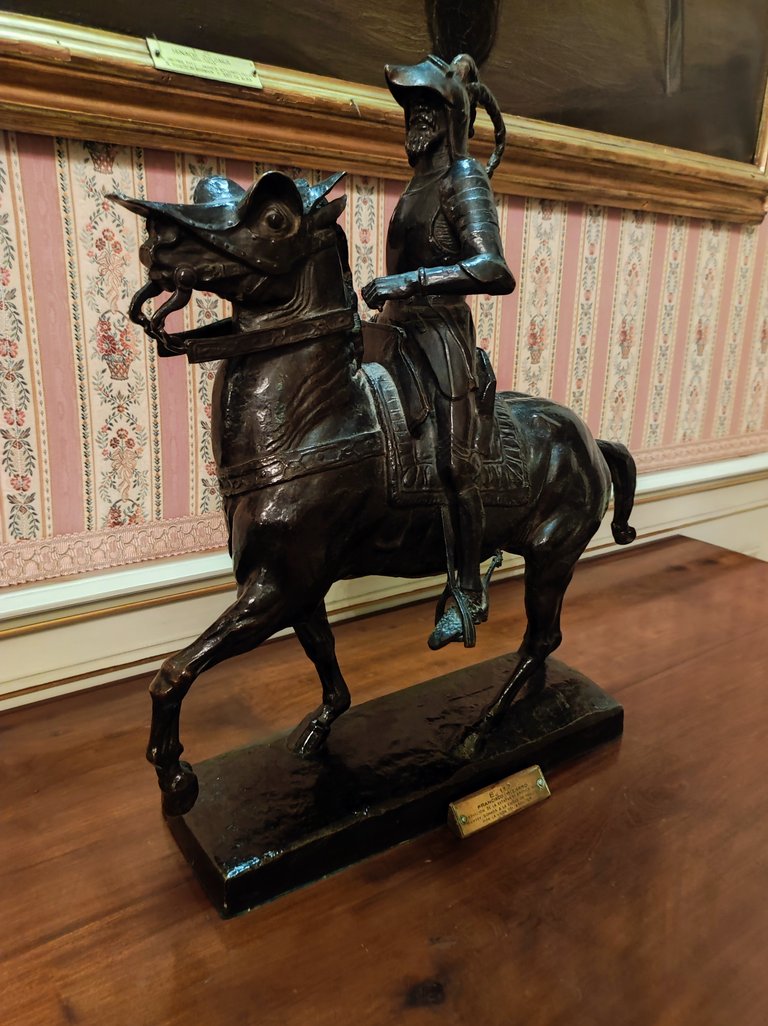
As I approached the exit, I noticed that the palace had a huge collection of tapestries that covered the walls of several rooms. Each of them told a different story, with richly embroidered scenes that represented important moments in the history of Spain and its colonies. The guide spoke enthusiastically about the value of these tapestries, mentioning how they were symbols of status and power.
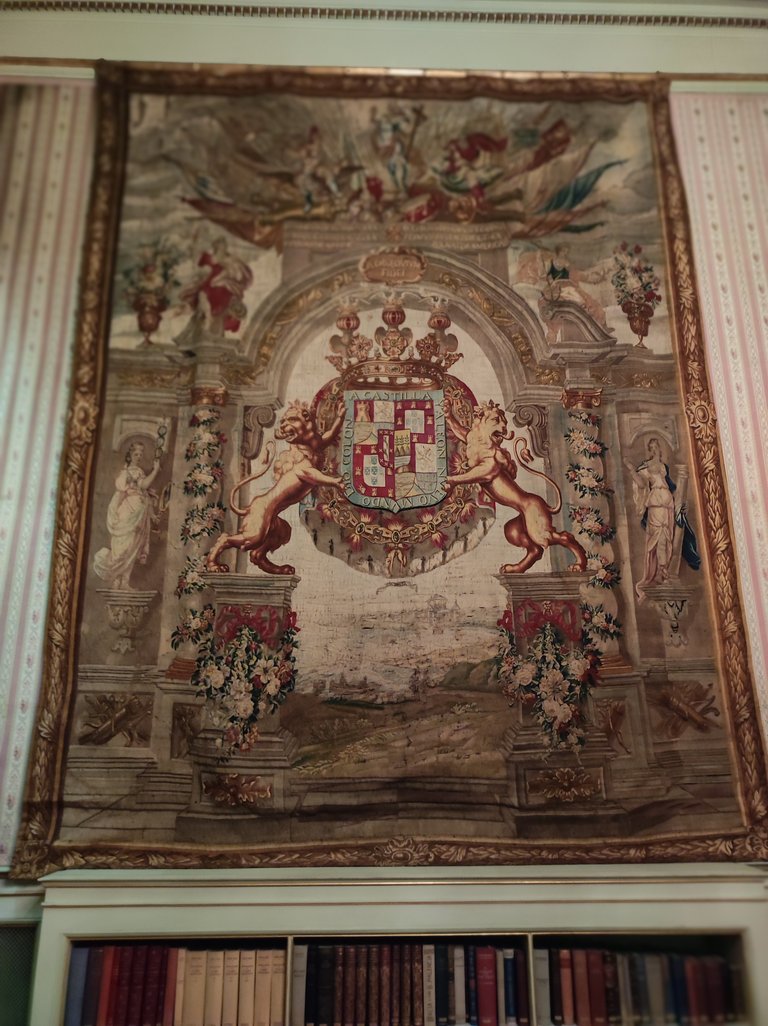
Before leaving, I stopped by a small but fascinating room dedicated to a variety of antiques relating to the daily lives of the nobility of the time. There were items such as lamps, clocks and tableware, all meticulously decorated and preserved. The guide, in a low voice, commented to the other visitors that these objects were used in the courts to show the prestige of noble families.
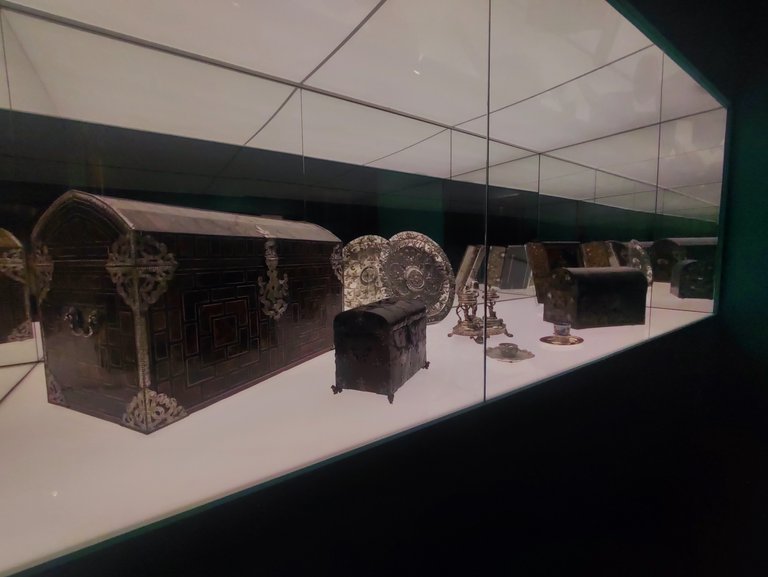
I hope you liked it, see you soon friends 😊
[PT-BR]
Olá a todos, espero que estejam bem. Hoje vou continuar meu post anterior. A exposição “Cartas de Colón” esteve numa área específica do palácio como vocês puderam ver no post anterior. As outras salas tiveram exposições diferentes. Cada um foi interessante e mostrou algo novo. O palácio, com sua bela arquitetura, ajudou a dar ainda mais vida às exposições. A exposição “Cartas de Colón” foi a que mais me chamou a atenção, mas as outras também já não servem.

Lá havia guias turísticos e eu escutei e aprendi um pouco, não pedindo guia, sempre que surgia alguma dúvida esperava um guia passar porque sempre havia visitantes. Sinceramente não gosto de visitar com guias porque demoraria muito mais tempo e queremos visitar várias coisas por dia e com guia ficamos lá muito mais tempo, claro que há coisas que tenho muita curiosidade e quero saber 😅 A visita continuou, e encontrei uma sala cheia de objetos históricos, como tintas antigas e penas de escrever. Alguns turistas conversaram com o guia sobre a importância desses objetos e ouvi alguns detalhes sobre como eles eram utilizados na época. O guia também falou sobre a arte de escrever à mão, prática que, segundo ele, descrevia uma dedicatória única, e me senti cativado pela ideia de como cada carta era um verdadeiro reflexo de quem a escreveu, com todo o seu cuidado e interesse.

Passei por uma sala onde estavam expostas diversas peças de arte colonial. O guia explicava a relação entre os artistas da época e as terras descobertas. Eu o ouvi falar sobre como a arte era usada, não para expressar beleza, mas também para documentar e legitimar a apresentação espanhola nas Américas. Fiquei pensando em como o poder da arte e da comunicação sempre foi uma ferramenta nas mãos de quem controla as narrativas. O fato de poder observar essas coisas me fez sentir ainda mais conectado com aquela história.

Ao explorar mais o Palácio Liria, encontrei uma sala que me fez parar por um momento. Estava cheio de retratos antigos de pessoas importantes da época colonial. Os rostos pintados nas telas são realistas, com olhares penetrantes que me fazem imaginar histórias por trás de cada figura. Vi o guia conversando com outros turistas sobre como esses retratos não eram apenas uma forma de arte, mas também uma forma de manter viva a memória dessas pessoas, como se, através da pintura, o passado fosse imortalizado.

Ao percorrer outras salas, percebi que o palácio estava repleto de peças de mobiliário antigo, muitas delas de grande valor histórico. As cadeiras e mesas, embora aparentemente simples, eram feitas de madeira rara e esculpidas de maneira complexa. O guia explicou que a maior parte destes móveis datavam dos séculos XVII e XVIII e estavam associados a famílias aristocráticas da época. Embora apreciasse os objetos, também sentia que tentava compreender o cotidiano dessas pessoas através do que restava delas.

Ao aproximar-me do final da visita, percebi que o Palácio de Liria não era apenas um local de exposição de arte e história, mas também um espaço que preservava as memórias de uma época em que o poder, a exploração e a cultura estavam profundamente interligados. A sensação de andar pelos mesmos corredores que outros membros da nobreza andavam era quase surreal. O palácio parecia guardar segredos, não só nas suas paredes, mas também nos objectos que ali se encontravam, à espera que os visitantes os descobrissem.

Ao me aproximar da saída, notei que o palácio possuía uma enorme coleção de tapeçarias que cobriam as paredes de diversas salas. Cada um deles contava uma história diferente, com cenas ricamente bordadas que representavam momentos importantes da história da Espanha e de suas colônias. O guia falou com entusiasmo sobre o valor destas tapeçarias, mencionando como elas eram símbolos de status e poder.

Antes de partir, passei por uma pequena mas fascinante sala dedicada a uma variedade de antiguidades relacionadas com o quotidiano da nobreza da época. Havia itens como luminárias, relógios e talheres, todos meticulosamente decorados e preservados. O guia, em voz baixa, comentava com os demais visitantes que esses objetos eram usados nas cortes para mostrar o prestígio das famílias nobres.

Espero que tenham gostado, até breve amigos 😊
You can check out this post and your own profile on the map. Be part of the Worldmappin Community and join our Discord Channel to get in touch with other travelers, ask questions or just be updated on our latest features.
Bzzzrrr, @name0, eu adorei a forma como você descreveu a exposição! Esse palácio é mesmo uma preciosidade. O que mais chamou a sua atenção, foi a arte de escrever à mão? #hivebr
AI generated content
Sim, foi uma das coisas. Mas teve muitas outras que adorei aprender sobre
Buuuuz, aprendizado é a melhor melada! Eu também adorei a história da pintura por trás da porta. Foi um tesouro escondido!
AI generated content
It's amazing, looks so amazing,The beauty of the display is very beautiful ❤️
True 🙂
Thanks for commenting ☺️
Some pictures that really interest my friend, hopefully there is something you like.
Your post was manually curated by @shiftrox.
Delegate your HP to the hive-br.voter account and earn Hive daily!
🔹 Follow our Curation Trail and don't miss voting! 🔹
Obrigado por promover a comunidade Hive-BR em suas postagens.
Vamos seguir fortalecendo a Hive
Hiya, @lizanomadsoul here, just swinging by to let you know that this post made it into our Honorable Mentions in Travel Digest #2464.
Your post has been manually curated by the @worldmappin team. If you like what we're doing, please drop by to check out all the rest of today's great posts and consider supporting other authors like yourself and us so we can keep the project going!
Become part of our travel community:
Thank you very much 😃
You are very welcome @name0! it was well deserved. ☀️
Keep up the great work 💪
Congratulations @name0! You have completed the following achievement on the Hive blockchain And have been rewarded with New badge(s)
Your next target is to reach 22000 upvotes.
You can view your badges on your board and compare yourself to others in the Ranking
If you no longer want to receive notifications, reply to this comment with the word
STOPCheck out our last posts: